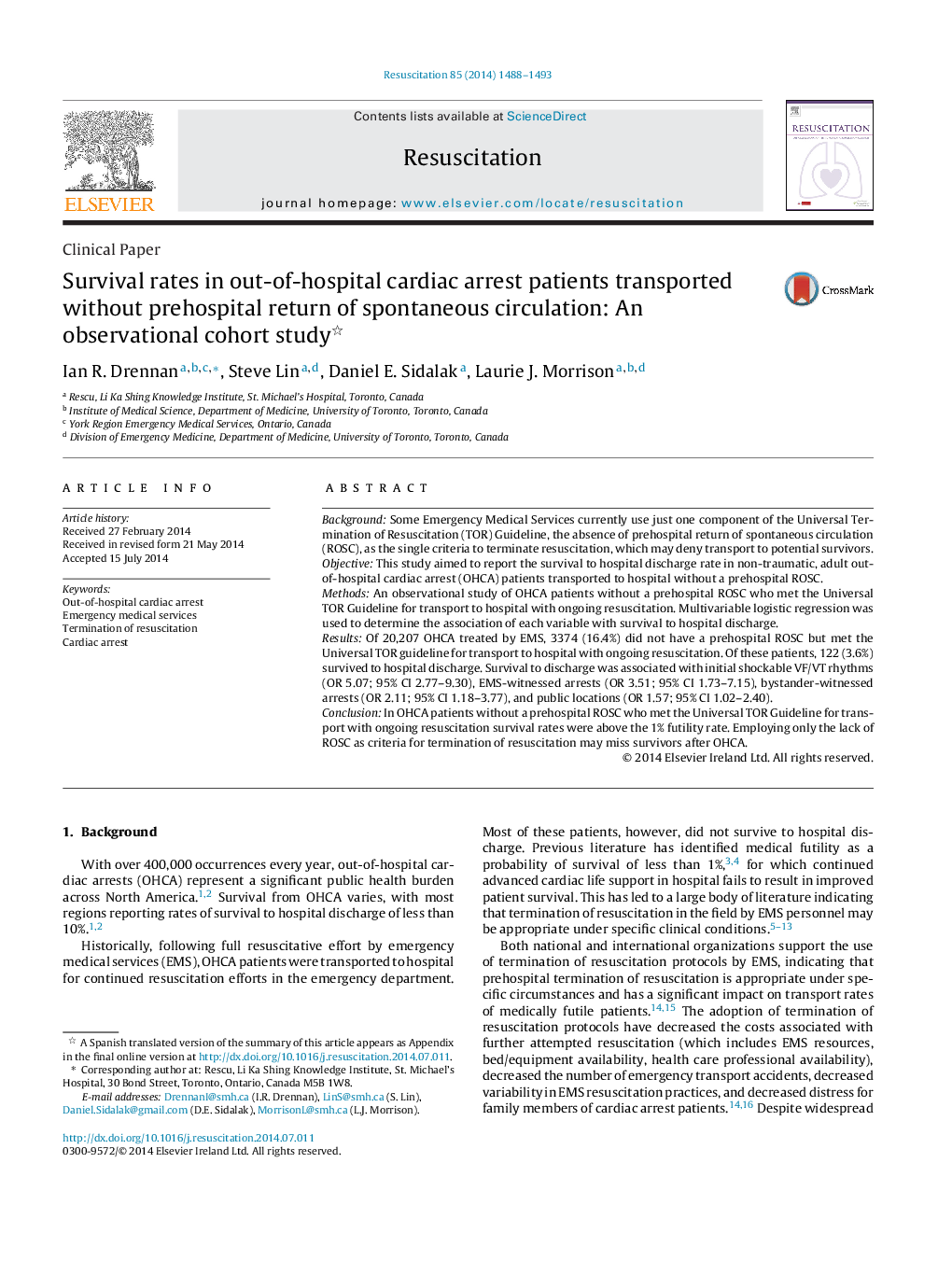| Article ID | Journal | Published Year | Pages | File Type |
|---|---|---|---|---|
| 5998166 | Resuscitation | 2014 | 6 Pages |
BackgroundSome Emergency Medical Services currently use just one component of the Universal Termination of Resuscitation (TOR) Guideline, the absence of prehospital return of spontaneous circulation (ROSC), as the single criteria to terminate resuscitation, which may deny transport to potential survivors.ObjectiveThis study aimed to report the survival to hospital discharge rate in non-traumatic, adult out-of-hospital cardiac arrest (OHCA) patients transported to hospital without a prehospital ROSC.MethodsAn observational study of OHCA patients without a prehospital ROSC who met the Universal TOR Guideline for transport to hospital with ongoing resuscitation. Multivariable logistic regression was used to determine the association of each variable with survival to hospital discharge.ResultsOf 20,207 OHCA treated by EMS, 3374 (16.4%) did not have a prehospital ROSC but met the Universal TOR guideline for transport to hospital with ongoing resuscitation. Of these patients, 122 (3.6%) survived to hospital discharge. Survival to discharge was associated with initial shockable VF/VT rhythms (OR 5.07; 95% CI 2.77-9.30), EMS-witnessed arrests (OR 3.51; 95% CI 1.73-7.15), bystander-witnessed arrests (OR 2.11; 95% CI 1.18-3.77), and public locations (OR 1.57; 95% CI 1.02-2.40).ConclusionIn OHCA patients without a prehospital ROSC who met the Universal TOR Guideline for transport with ongoing resuscitation survival rates were above the 1% futility rate. Employing only the lack of ROSC as criteria for termination of resuscitation may miss survivors after OHCA.
